To Oban and the Isles of Mull and Iona
Last modified 27 July 2006 19:15 Eastern Time
| Going from the Great Glen to Oban, we passed along the Movern Hills. So we got a view of Castle Stalker one doesn’t usually see in pictures. |
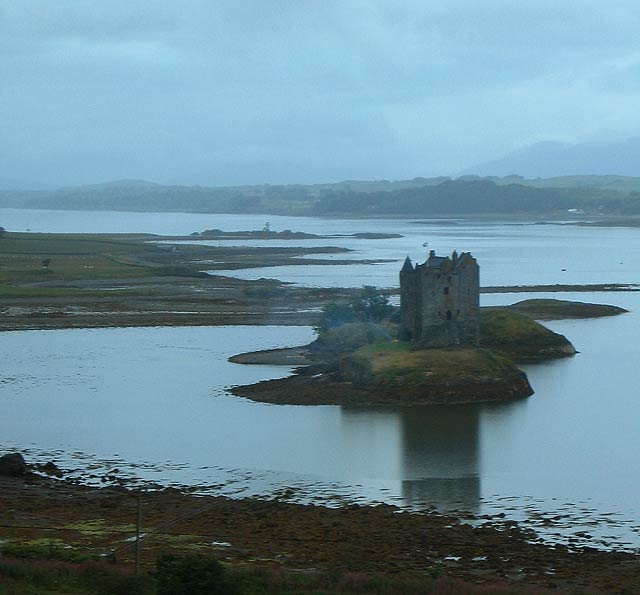 |
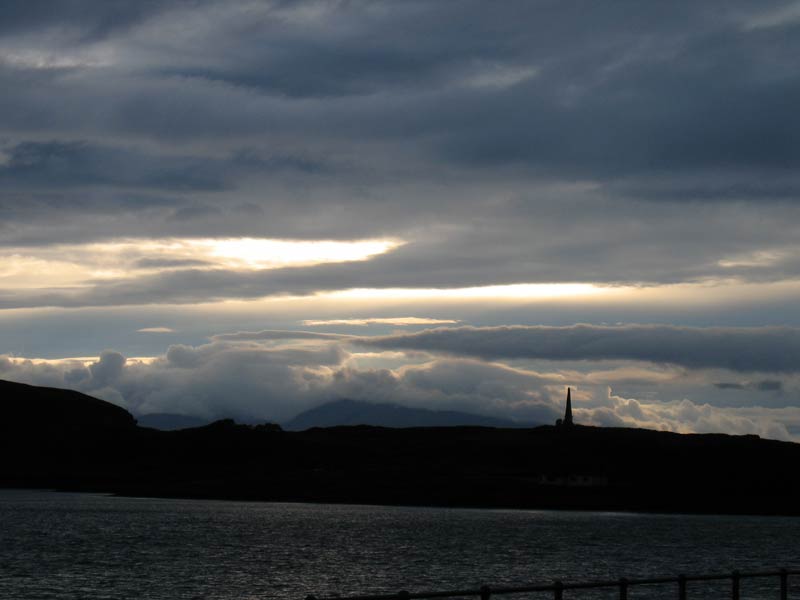 |
By the time we got to Oban, the sun was setting in some amazing clouds! I ran to take a picture. |
The next day, as we got ready to board the ferry to Mull, I got this shot of the area with our hotel. It’s two buildings to the left of the big brick church. The area in the front has a wonderful view of Oban and the harbor, as well as WiFi access. The WiFi access is expensive! I paid, US$30.98 for 24 hours of access. I don’t remember if they offered smaller time frames, as they did at my Interaction hotel.
This ferry carries both people and vehicles. We put our motor coach on board, which was hardly unusual. Several of them drove off the ferry at Mull. |
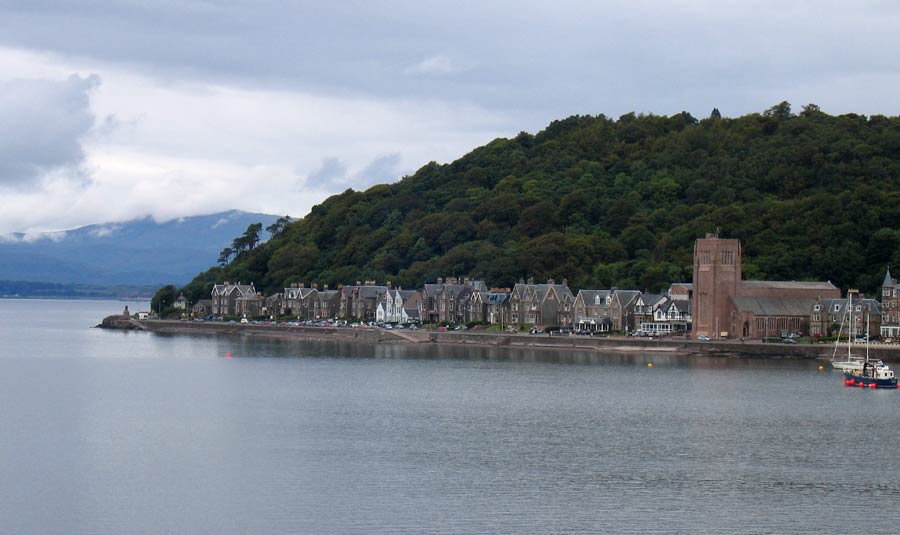 |
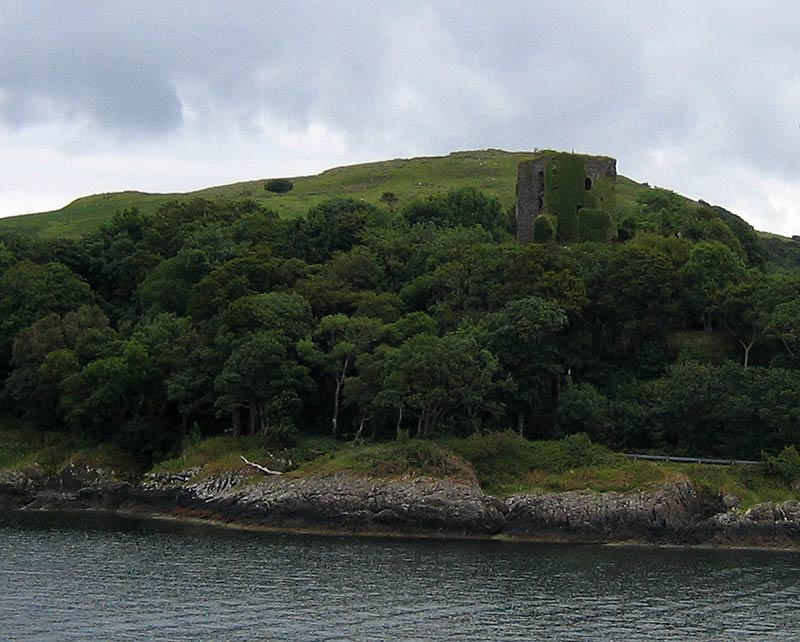 |
I saw this ruin from the ferry on the way to Mull. Don’t know what it was or is. Don’t know if it’s really a ruin or someone just doesn’t believe in glazing. Maybe raising the tower was the limit of their funds and window glass wasn’t considered important. I may never know. |
| Forgot to mention this. When the ferry came in to Tobermory, the whole prow just rotated up. Convenient. |
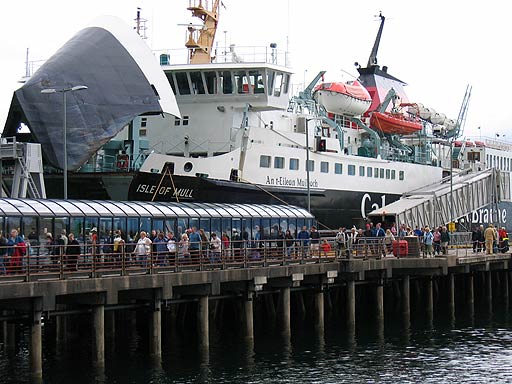 |
The drive on Mull was interesting. We went by the only road on the Isle, a one-lane way with lots of pull-overs.
The scenery was fantastic! I can’t do justice to it with my photos, so I’m not going to try.
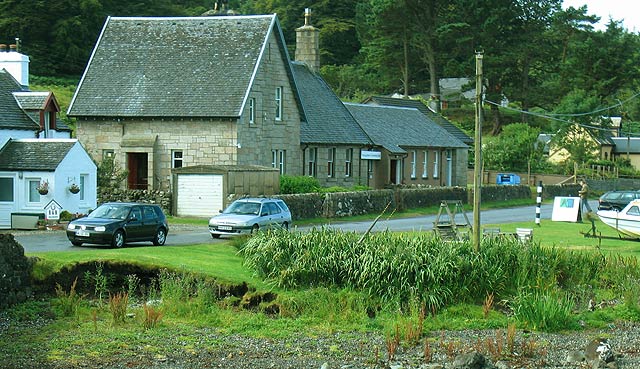 |
On arrival at Fionnphort, we proceeded to wait for the ferry to come back from Iona. It was in sight the whole time, as it’s a straight shot across maybe a kilometer (likely less) of water to get from Fionnphort to Iona. I wouldn’t want to try to swim it, though. Bit chilly.
This ferry was significantly smaller than the previous one, but since everything was within walking distance on Iona, we wouldn’t need the motor coach, even if we’d been allowed to bring it. There seems to be a very limited need for transport, other than walking, on Iona.
In some ways, it must be like paradise to live there, at least in the summer. Just wait and the tourists bring money to you! Sell them stuff and never have to leave. I don’t want to think too hard about what it’s like in other seasons, and the cost of living must be noticeable. |
Once we got to Iona, we proceeded up the road to the ruin of the Iona Nunnery. I’ve tried to include the sign which explains something of this history and layout of the ruin, but I haven’t found a way to do so without either shrinking it too far to be readable, or using Java, which is a language I don’t know at this time. So I’m going to skip that bit for now.
| Here’s a good view of the nunnery’s church. The center of the main building, closer and to the left, has been filled with flowering plants. |
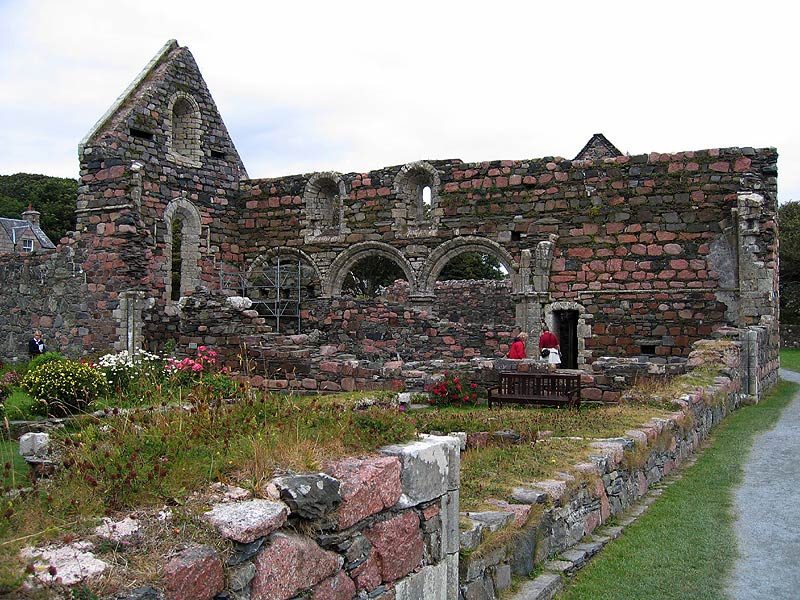 |
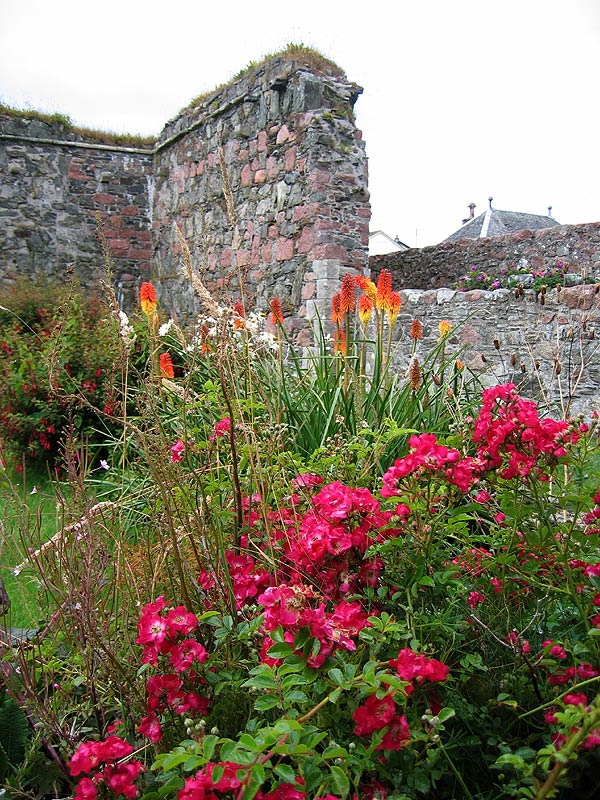 |
Someone did a marvelous job of setting these up. |
| Not every plant is planned, at least by humans. |
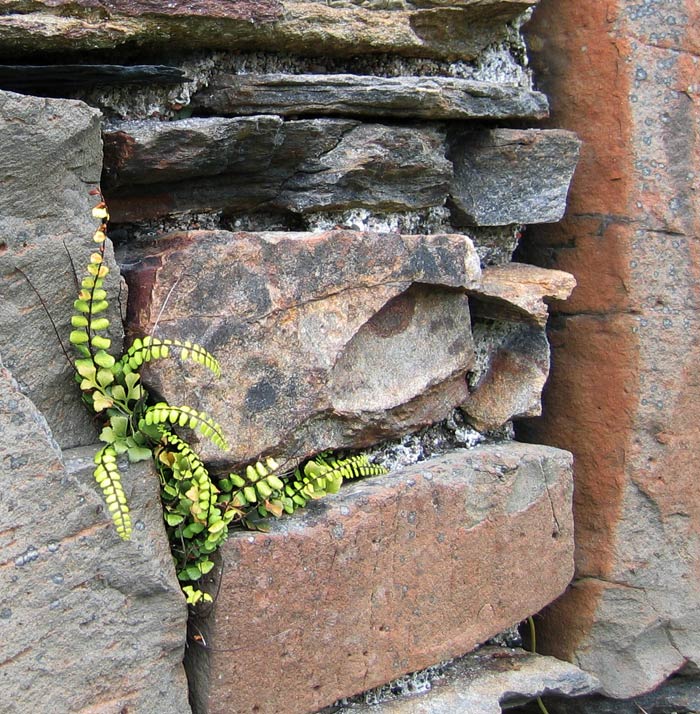 |
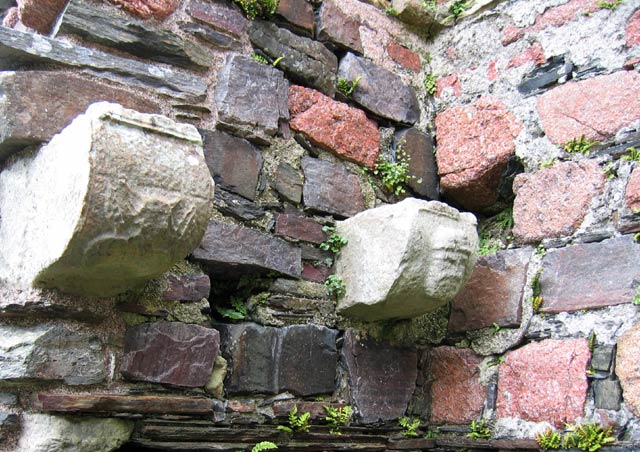 |
Some of the nuns appear to have been buried right outside the building. There’s no obvious way to tell who is who, as the engravings have worn off with the passing years. There remain a number of these apparent supports for a second floor in the Nunnery church. They’ve become very worn also. |
Moving along, the group proceeded with our guide, who was telling about what we were seeing. We got to Iona Abbey itself, which was apparently undergoing some kind of refurbishment.
The stone path coming toward the lower right is the Street of the dead, heading toward the Abbey’s cemetery. I took no pictures in there, as I had plenty of other views available and limited time. |
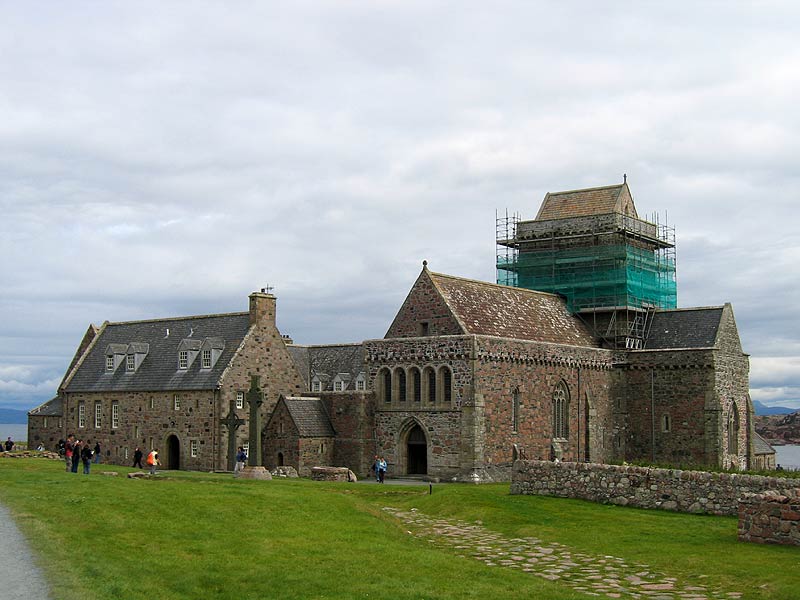 |
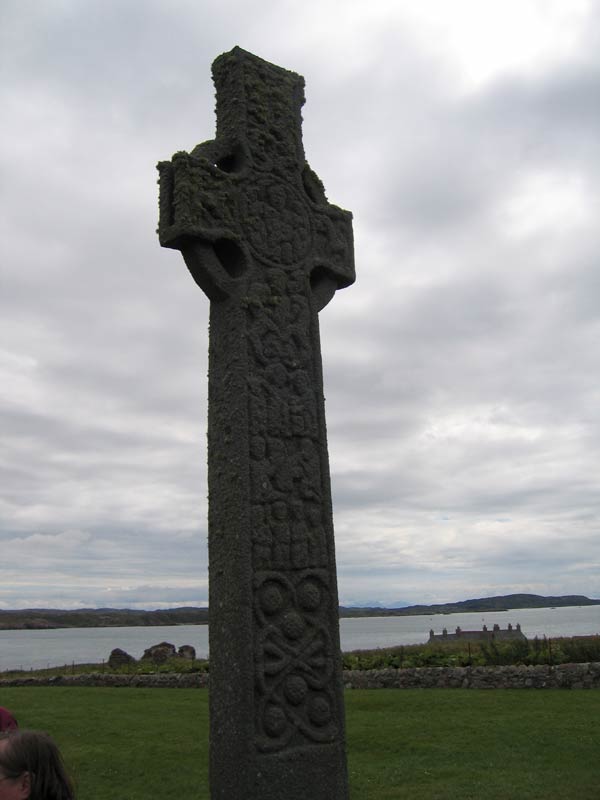 |
There are a number of Celtic crosses outside the Abbey. Unfortunately, the originals have been taken indoors since they succumbed to the weather. This is the site of St. Martin’s cross, at least what remains of it. The sign below it says St. Martin’s Cross
This magnificent eighth century
cross stands on the site it has
occupied for over a thousand years. |
The former sites of St. John’s and St. Mathew’s crosses are very close. Unfortunately, due to the effects of weather, those crosses have been brought inside, and reconstructed as much as possible. The St. John’s cross has a replica in the original position, but it’s not the same, though it’s unavoidable. The choices seemed to be a replica, gravel, or nothing. |
| Inside the Abbey, which is a working building as well as a kind of museum, I found this tomb of the Eighth Duke of Argyll and his Lady. I'm not sure if it's a good thing to post, but I'm told I did a decent composition of it. |
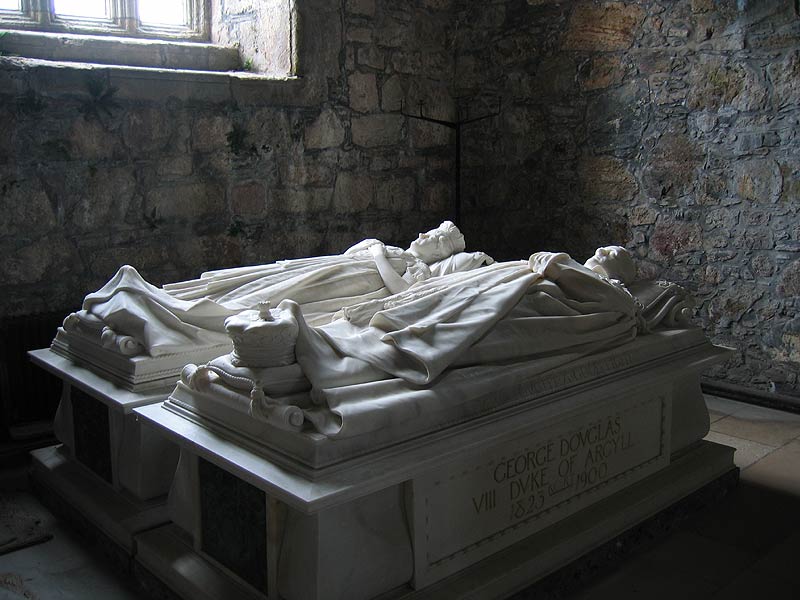 |
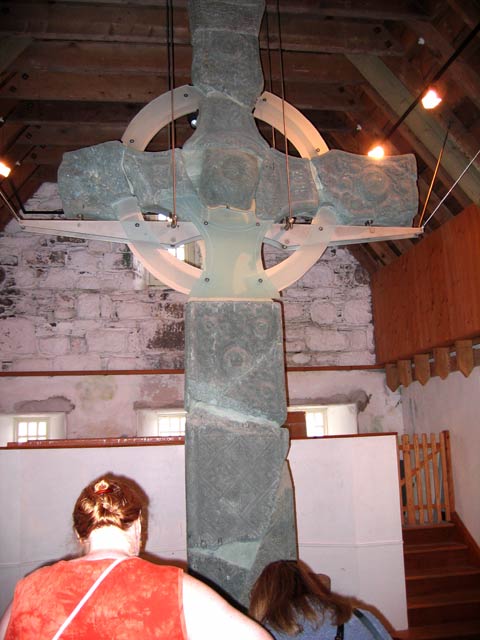 |
Here’s St. John’s cross, in the Abbey infirmary, reconstructed. Yes, I’m serious, they put it in the (former) infirmary. St. Oran’s cross is close-by, laying down. If you stood up for a thousand years, you might want to lay down too. |
There are a bunch of grave cover stones in the Abbey’s former infirmary, which were taken inside to prevent further weathering. I took pictures of them all, but it would, generally speaking, be uninteresting to look at here, so I’m not posting them.
Anyway, after this we finished on Iona, we reversed the procedure, returning on the ferries and our motor coach.
| Back in Oban, I found this inflatable dalek outside an internet cafe. Now, I’ve heard of some pretty strange alt.sex.* concepts, but an inflatable dalek?? I did not go inside! :-D |
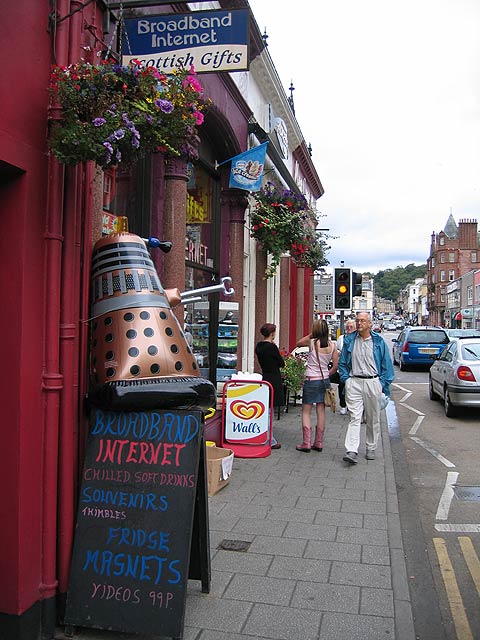 |
Time to head south again toward Glasgow.















